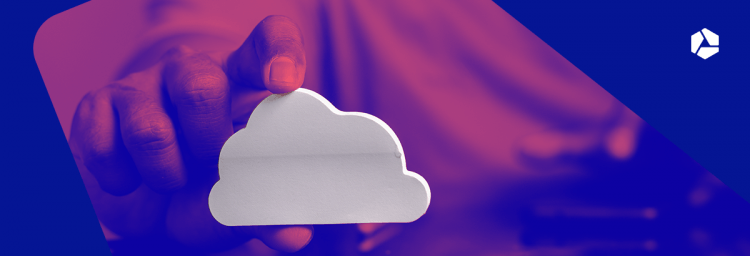SaaS, PaaS, IaaS: what does it mean?

When looking for information on the cloud, you will often come across terms like IaaS, PaaS and SaaS. For IT professionals who use them on a daily basis, these abbreviations are quite common, but newbies will probably not be able to make much sense of them.
Luckily, you have come to the right place, as we are going to explain the difference between these three concepts. Just a hint: these are three services that are connected with cloud computing. That is working in the cloud, with as little as possible on your own computer.
The "as a Service" model
The first thing to notice is that each of these words ends in "aaS", which stands for "as a Service". So they are all 'services', more specifically cloud services.
This means that you do not have to buy anything yourself. Instead, you simply 'rent' the services. This concept is as old as the hills, of course: if you have a cleaner, he or she is obviously not your property, but provides a 'cleaning service as a service'. But then we are obviously not talking about cloud services 😉.
The big difference between Iaas, Paas and Saas lies in the scope of the cloud solution. How much do you have to provide yourself, and how much input does your 'as a Service' partner have?
Your cloud consists of various components: infrastructure (servers, cables, network, etc.), operating system and security software (Windows, Linux, antivirus solutions, etc.) and, finally, ready-to-use software packages that you can use as an end customer.
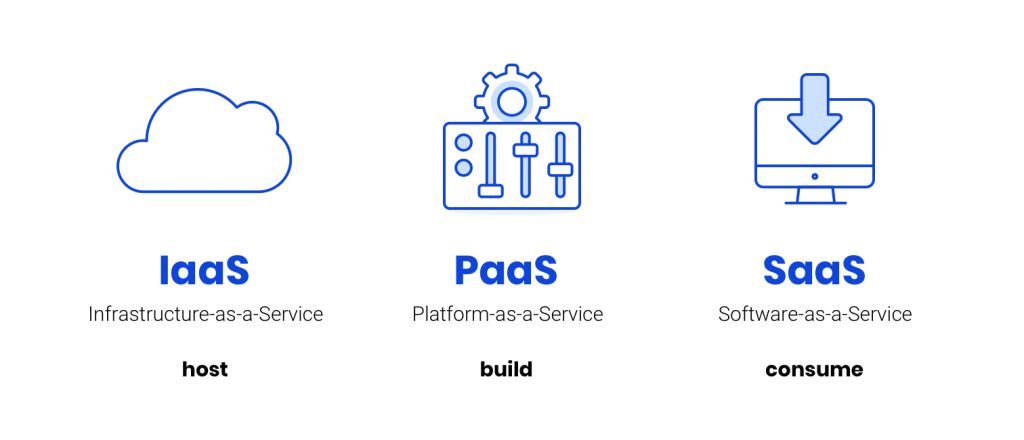
This results in the three segments Iaas, Paas and Saas: infrastructure, platform and software. SaaS is the most common cloud service, encompassing the other two cloud services. Let us first consider the lowest layer: Infrastructure as a Service.
What is Infrastructure as a Service (IaaS)?
IaaS stands for Infrastructure as a Service. At the very basis of your cloud services is the infrastructure. And you can buy this as a service: this is the IaaS model.
This solution ensures that you get (from a good service provider) reliable equipment that is always available. You then configure your operating system and other software yourself.
In other words, you outsource the physical part of your cloud: you rent 'empty server space' from an external provider.
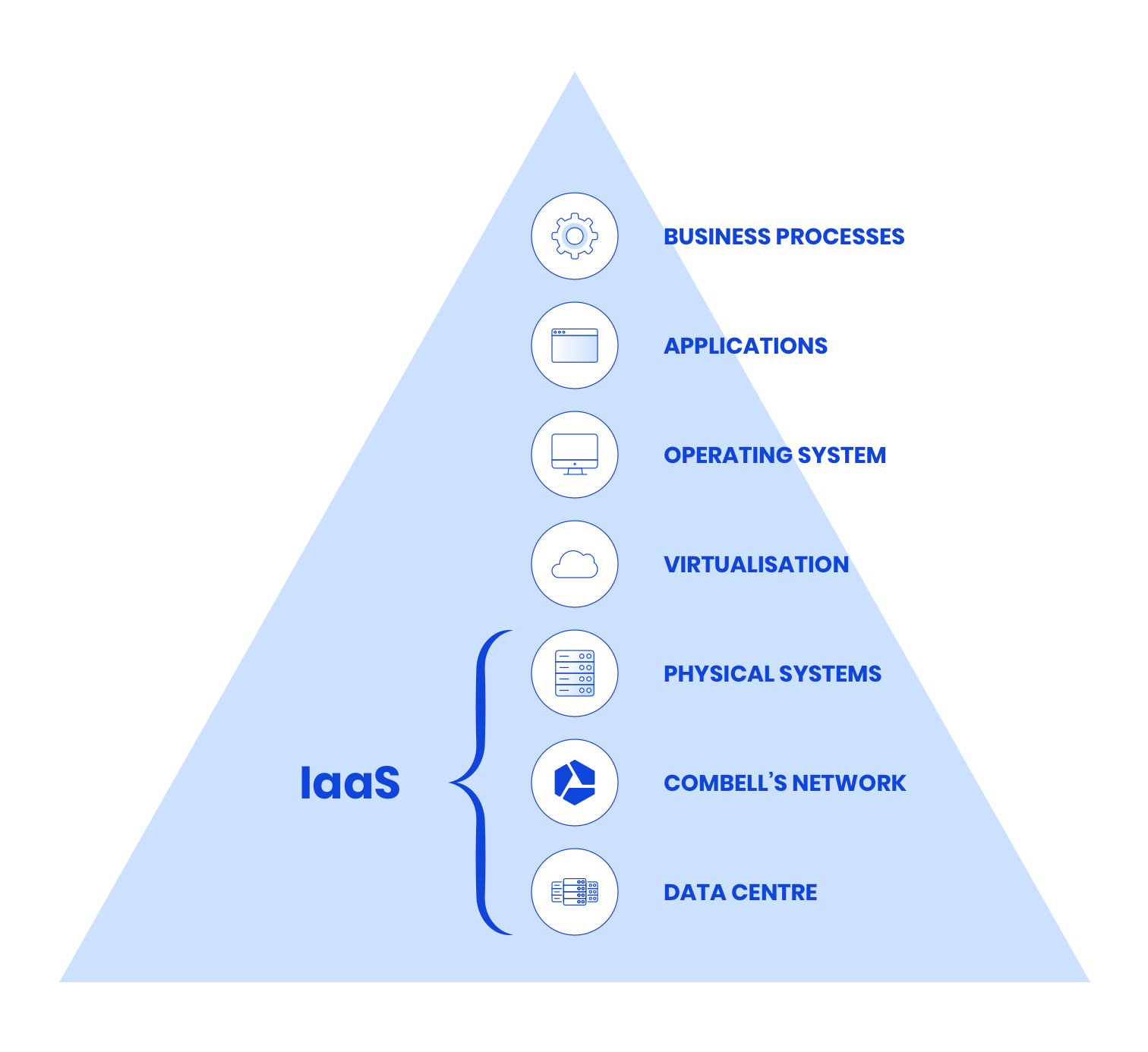
Companies that move to the cloud often choose IaaS. This means that they outsource their entire ICT system, including storage and connectivity, to an external service provider (such as Combell). This is safer and easier than keeping your own servers 'on premise'.
Instead of purchasing servers, storage, firewalls and network equipment, a company rents everything as a service, and the entire setup is in an external data centre.
But make no mistake: even though your infrastructure is no longer located in your own office, IaaS still allows you to decide what happens with it. For example, you are entirely free to choose the operating system and the software that will be installed on your servers.
IaaS is also often called an 'unmanaged' cloud: your service provider guarantees the infrastructure, but does not provide software management. Fortunately, Combell offers a solution for this 😉.
Managed IaaS with Combell
With IaaS, Combell also provides managed services. Because although many companies see the advantage of Infrastructure as a Service, they still struggle with the fact that this rented infrastructure must be managed by their own system administrators or an IT service provider.
What Combell does is remove that last obstacle: with our managed cloud, we manage your rented infrastructure and take care of the security, privacy, monitoring and backups of your system.
Combell provides rock-solid guarantees for maximum uptime, but also ensures business continuity and disaster recovery. And as an added bonus, we give you expert advice on every project you want to start.
We also get you started with DevOps, so that your developers can build new applications or websites that are even more in tune with your infrastructure. So you no longer have to worry about uptime, as we take care of everything for you.
Moreover, with your managed cloud solution, Combell offers excellent SLAs, which ensure fast response times or the monitoring of your hardware and software.
With Combell, you can purchase both unmanaged and managed IaaS, depending on what best suits your needs!
The benefits of IaaS
When you go for IaaS, you mainly go for peace of mind, but the benefits go beyond that.
The drawbacks of IaaS
The disadvantages of IaaS apply mainly to unmanaged IaaS.
Who uses IaaS?
You can think of IaaS as your own server, but in a different location. It is ideal for companies that want to move their entire on-premise servers to the cloud.
You can also read
What is Platform as a Service (PaaS)?
PaaS stands for Platform as a Service. With this, in addition to the physical part of your cloud, you also outsource the management of your operating systems.
This means you can develop software in the cloud and then offer it to others as SaaS. PaaS is thus aimed almost exclusively at programmers: you get a comprehensive development platform on which you can develop your own applications and make them available to the public.
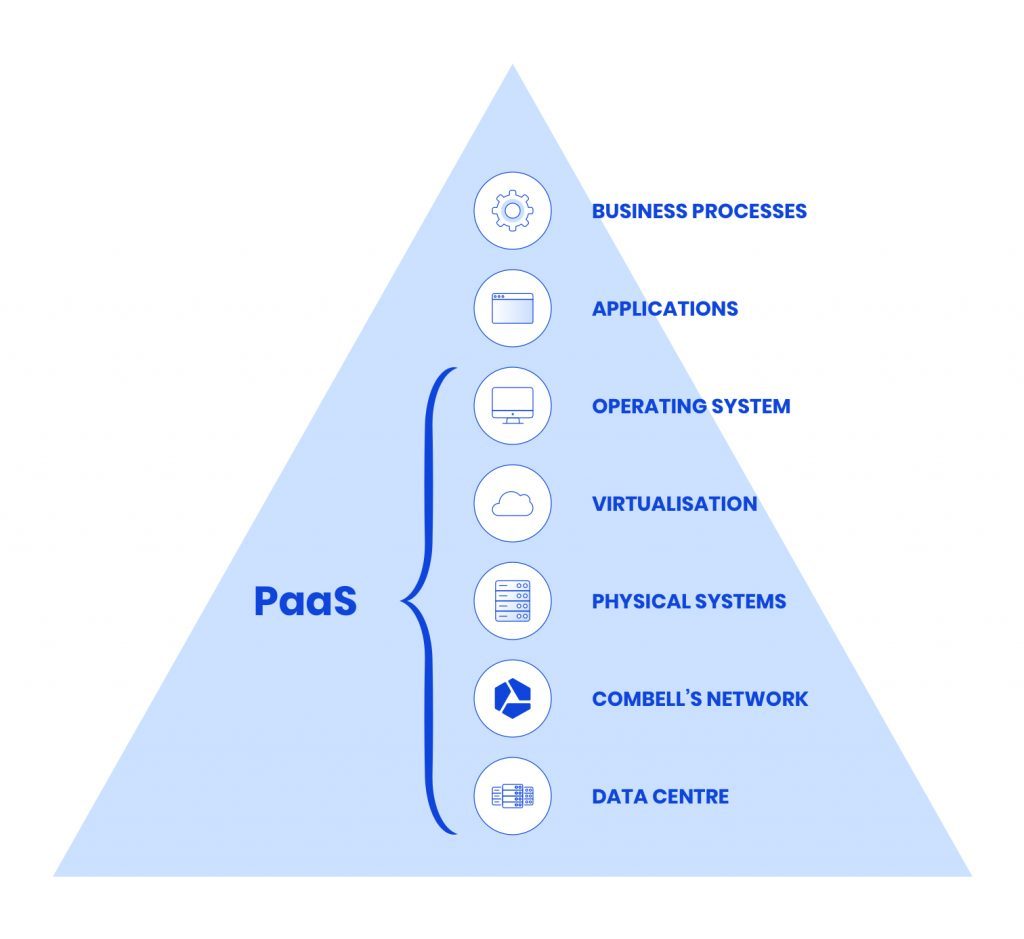
The benefits of PaaS
The benefits of Platform as a Service are pretty much the same as those of IaaS, but with even more peace of mind.
The drawbacks of PaaS
There is one major disadvantage to PaaS – although this is often not as great as the disadvantages of developing an application on your own systems.
Who uses PaaS?
PaaS is ideal for people who develop websites or applications and who do not want to lose any sleep over the security and management of their rented infrastructure. It allows these developers to easily develop SaaS solutions on the rented platform.
What is Software as a Service (SaaS)?
The most common form of cloud computing is SaaS: Software as a Service. When you choose SaaS, you no longer purchase and install software locally on your computer. Instead, you replace that software with software that is offered as an online service.
As an end user, Saas allows you to enjoy a very comfortable working environment: you can start using the software right away without any technical knowledge! The provider bears all responsibility for ensuring that the product works properly. SaaS also includes IaaS and PaaS, but more on that later.
An example of Software as a Service is Microsoft Office: in the past, you had to buy a new CD-ROM version of the Office suite every few years if you wanted to be able to benefit from the latest features. Now, Microsoft mainly offers the SaaS version of Office (in the Microsoft 365 package).
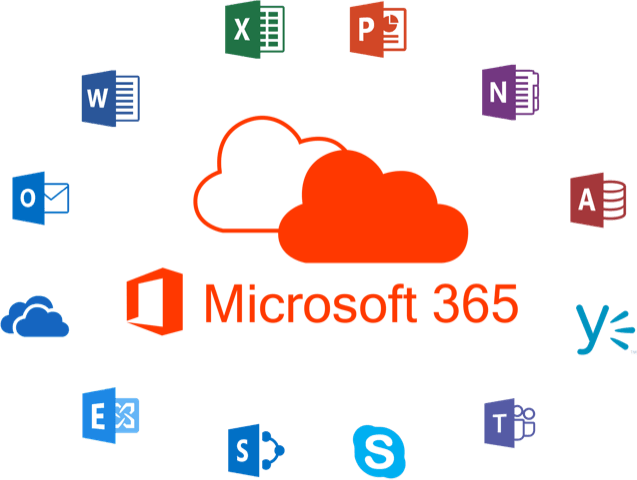
The main advantage of SaaS is that customers no longer have to buy a software licence. Instead, they pay a monthly or annual subscription for the service provided, often based on the number of users. And this also includes all updates.
Examples of SaaS
Combell itself also supports SaaS solutions. That is why we are proud of customers who have developed their own Software as a Service solutions. These include:
The benefits of SaaS
The drawbacks of SaaS
Unfortunately, every advantage has its disadvantage:
Who uses SaaS?
SaaS is so widespread that almost everyone uses SaaS. Just think of your Outlook or Gmail account, or Windows 365.
Combell as a cloud partner
Whether you are looking for an IaaS solution to move to the cloud or, if you are a developer with PaaS, you want a platform to develop your application or SaaS, Combell will be happy to help you.
We always focus on three pillars: security, performance and accessibility. This way, you can work confidently, on a solid infrastructure, whenever you want!

